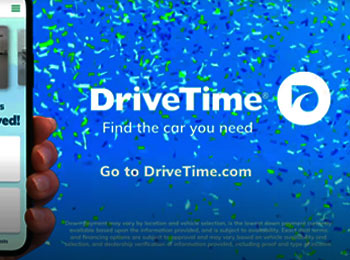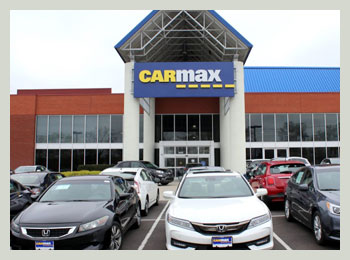When it comes time to buy a used car, two major national chains likely come to mind – DriveTime and CarMax. As leading used vehicle retailers, DriveTime and CarMax have each carved out a significant share of the market, but they have some notable differences in their business models and car buying experiences.
This comprehensive guide examines the key features, pros, cons and frequently asked questions when it comes to DriveTime and CarMax to help consumers make an informed decision.
A Brief Comparison Table
| Feature | DriveTime | CarMax |
| Pricing | Posted prices, room for negotiation | No haggle pricing |
| Selection | Thousands of used vehicles | 50,000+ used vehicle inventory |
| Financing | Specializes in bad credit, in-house financing | Partner lender financing only |
| Test Drives | Standard test drives | 24-hour test drives |
| Returns | 7-day money back guarantee | 30-day money back returns |
| Online Experience | Full online purchasing available | Online tools to aid shopping |
Overview of DriveTime
Founded in 2002 and headquartered in Tempe, Arizona, DriveTime has emerged as one of the largest used car chains in the nation with over 145 dealership locations across the country. DriveTime prides itself on offering a large selection of used vehicles from various manufacturers, flexible financing options and a customer-friendly car buying process.

Some key things to know about DriveTime:
- Specializes in used cars, SUVs., trucks and vans typically between 1-5 years old with reasonable mileage.
- Vast nationwide inventory with thousands of vehicles, updated daily online.
- In-house financing available for customers, including no credit check options.
- accepts trade-ins and most vehicles come with a limited warranty.
- 7-day money back guarantee if not fully satisfied.
- DriveTime Express offers customers a way to browse and purchase vehicles completely online and have them delivered.
Overview of CarMax
Headquartered in Richmond, Virginia, CarMax pioneered the “no haggle” used car buying experience when it was founded in 1993. With over 200 locations across the U.S., CarMax advertises a huge selection, low pricing and customer-oriented sales process.
Here are some of CarMax’s notable features:
- Extensive nationwide inventory of over 50,000 used cars, trucks, vans and SUVs. both online and on lots.
- Prices are fixed and clearly marked on all vehicles. No negotiations or haggling.
- Financing, trade-ins, warranties and protection plans available.
- Offers a 24-hour test drive policy and 30-day money back returns.
- Online tools like the car buying assistant provides personalized recommendations.
- Home delivery now available in many areas of the country.
Also Read: Comparison Between CarMax And Enterprise Car Sales
Key Differences Between DriveTime and CarMax
Now that we’ve outlined the basics of each company, let’s directly compare some of the major differences between the DriveTime and CarMax car buying experiences:
- Pricing
At DriveTime, prices are clearly posted online and on vehicles, but there is often still room for negotiation. Sales associates may be willing to come down on price if asked. CarMax takes the opposite approach with strict no haggle pricing that can’t be negotiated.
- Selection
Both offer extensive nationwide inventories, but CarMax typically has a wider selection with over 50,000 vehicles across their locations compared to DriveTime’s thousands of cars. CarMax locations also tend to be larger.
- Financing
DriveTime specializes in flexible in-house financing and works with customers having poor/no credit. Rates can be high, so shop around. CarMax offers financing through partner lenders but doesn’t emphasize it as much. Rates are dependent on credit.
- Test Drives
CarMax has a 24-hour test drive policy compared to DriveTime’s more normal test drives. This gives CarMax customers extra time to try out vehicles.
- Returns
DriveTime touts a 7-day money back guarantee if not satisfied. CarMax gives customers 30 days to return a vehicle for any reason. Both show confidence in their vehicles.
- Online Experience
DriveTime Express allows complete online car buying from home while CarMax focuses more on using online tools to aid shopping before visiting a store. DriveTime also lacks the personalized recommendations and assistant CarMax offers.
Also Watch This Review Video:
Pros of DriveTime
What are the major advantages of buying from DriveTime Vs. competitors?
- Specializes in customers with less than perfect credit with flexible financing options and programs available. Makes financing more accessible.
- Great selection of lightly used vehicles between 1-5 years old, many with reasonably low mileage and plenty of life left.
- DriveTime Express online car buying experience provides convenience and saves time for savvy customers.
- Clear pricing posted on vehicles gives buyers a reference point to start negotiations if desired.
- Locations across the country make browsing inventory and test driving easy.
- Money back guarantee provides consumer confidence and peace of mind in major purchase.
Cons of DriveTime
Some potential downsides of buying from DriveTime include:
- While posted, prices aren’t fixed so negotiating may be necessary to get the best deal. Can create back and forth.
- Interest rates through in-house financing tend to be higher than financing from an outside bank or credit union.
- Selection less robust than the nation’s largest used retailers like CarMax. Limited mostly to popular makes and models.
- No extended test drive policy like some competitors. Test drives can be short and rushed.
- Online vehicle descriptions and photos often lacking details buyers want to see. Reliance on visiting store.
- Some customer complaints about high-pressure sales tactics from representatives.
Pros of CarMax
What makes CarMax a compelling option Vs. other used car retailers?

- Massive selection with varied makes, models, colors and options. Great for finding something very specific.
- Strict no haggle pricing provides a low stress buying experience without tedious negotiations.
- Financing rates through partner lenders are competitive based on buyer’s credit. Pre-approvals available.
- Generous 24-hour test drive policy gives customers extra time to properly try out vehicles.
- 30-day money back guarantee, even better than DriveTime’s return policy.
- Personalized online tools and assistant make searching inventory and budgeting easier.
- Home delivery in many areas adds convenience for buyers who prefer it.
Cons of CarMax
Possible disadvantages of CarMax to consider include:
- While prices are transparent, the no haggle policy means no ability to negotiate or get a lower price.
- Costs can run higher than smaller independent used lots. Condition and selection comes with premium pricing.
- Emphasis is more on self service online or in store. Sales staff provide little guidance unless asked.
- No special financing programs for customers with bad credit. Must have solid credit to qualify for partner loan terms.
- Locations are large retailer-style facilities. Lacks personal touch of small car lots.
- Some customers report pushy associates trying to upsell add-ons and services after a purchase is made.
Also Read: Comparison Between Carvana And DriveTime
Frequently Asked Questions (FAQs)
Yes, most vehicles purchased from DriveTime have GPS trackers installed. This allows DriveTime to disable the vehicle remotely in case of missed payments. The trackers are supposed to be removed upon completion of the finance contract.
Yes, DriveTime offers a 7-day money back return policy if not fully satisfied with the vehicle for any reason. The car must be returned in similar condition with limited mileage put on it. Any down payment or payments made are refunded back to the buyer under this policy.
When buying from CarMax, make sure to ask: Does the price listed reflect the full out-the-door price including all fees and taxes? Is this vehicle a CarMax retail unit or from the wholesale auction? Retail cars tend to be higher quality. Does this vehicle have any remaining manufacturer warranty or aftermarket warranty coverage? What reconditioning and inspections has this vehicle passed?Is there any damage, repairs or re-painting that I should know about? How long has this vehicle been in your inventory? Quick turnover can reflect demand.
CarMax aims to take the stress and haggling out of car buying. They achieve this through offering fixed, no-negotiation pricing, a huge selection of popular vehicles, flexible financing terms for qualified buyers, extended test drives and longer money back guarantees. This transparent and customer-focused approach is part of their “Love Your Car” strategy to improve the car shopping experience.
The Bottom Line
When comparing DriveTime and CarMax, it’s clear both have their own strengths and weaknesses that will appeal to different buyers.
DriveTime specializes more in flexible financing and serving budget-minded customers, even those with poor credit. CarMax focuses on top-notch selection, strict pricing and a low pressure sales process.
Do you want to negotiate and find financing help despite bad credit? DriveTime might be a fit. Are you willing to pay more for a vast selection and haggle-free experience? CarMax could be right for you.
For most buyers, visiting locations of both chains, taking extended test drives and comparing options side-by-side will help determine if DriveTime or CarMax is the better choice.
With large national presences, you can’t go wrong taking the time to shop both when buying your next used car.
